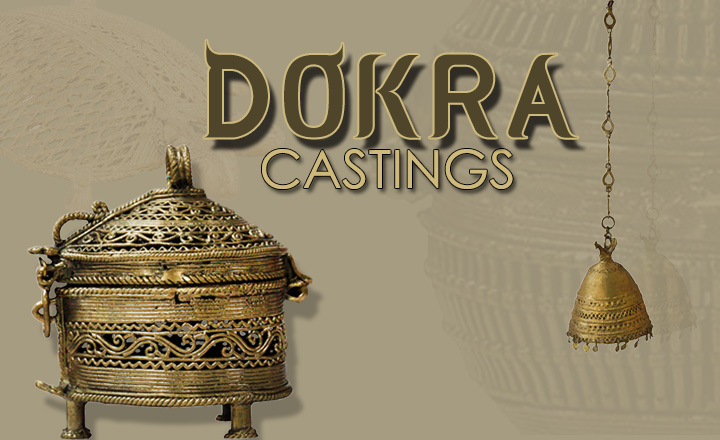Artefacts Created with Lost-Wax Technique

Dhokra or Dokra, is also known as bell metal craft. It is a form of ancient art practiced by the Ojha metal smiths living in states like Jharkhand, Chhattisgarh, Odisha, West Bengal and Telangana while the style and also the workmanship of this artisan community varies in different states. It is a tribal metal craft practiced in Ushegaon village of Jainoor Mandal, Adilabad District of Telangana. In Telangana, they are also known as Ojjis who make brass metal art objects using the complex but the perfect lost-wax technique for casting of the metal. The technique of lost wax casting is being practiced in India for more than 4000 years and even to this day, it is in use by these craftsmen.
Metallurgical Expertise
The Dokra artefacts, mainly made in brass are highly unique wherein the pieces do not have any form of joints. The entire object is fully handcrafted with traditional designs being considered highly aesthetic in nature and a collector’s delight. The handicrafts are known for combining the metallurgical skills with wax technique for making artefacts of distinctive look and beauty. The lost wax technique is a distinct form where the mould is used only once and broken, which makes the figure one of its kind in the handicraft market.
The Process of Making Dokra Artefactse
The method of making Dokra is done by combining the metallurgical skills with that of the lost wax technique. There are two processes of lost wax casting. The first one is Solid casting which is the method followed in the South and hollow casting, practiced in other states. The hollow casting method makes use of clay core method, treated as the traditional method. The workmanship is practiced by theOhji community, who create the idols and figures.
In this process, firstly the hollow casting is used for making a clay core that would define the way the object is created. The core is further filled with bee’s wax and resin etc. This wax is further shaped while finer details are made with proper embellishments. This job is mainly dependent on the carver’s skill, which is then covered with clay and there are drains made on the mouldto see that the wax is drained after the mould is heated. The wax is replaced next by molten brass, gold, bronze or silver which is left for hardening inside the mould. The mould is subsequentlychipped away for retrieving the object inside. Finally it is polished and the finished product is put on display.
Range of Crafts
The designs made are metal figurines, elephants, folk motifs, peacocks, horses and also household articles such as measuring bowls. Dhokra is considered highlylabor intensive because even a simple piece requires 4-5 days whereas the complicated designs may require 2-3 weeks. The work is popular across the domestic and international markets due to the aesthetic and primitive simplicity.
The work mainly involves folk motifs, peacocks, elephants, horses, lamp caskets and other simple traditional designs. Dhokra represents the exquisite variety and glory of Telangana’s handicrafts. Pen holder, oil lamps, Pandhan, wall hanging, hanging bells, paper weights, card holder and many such appealing products are creating using Dhokra.